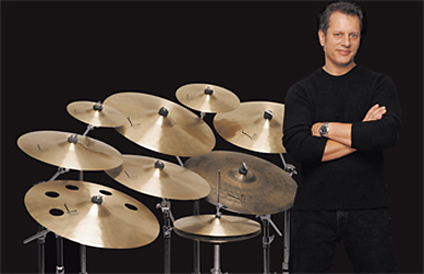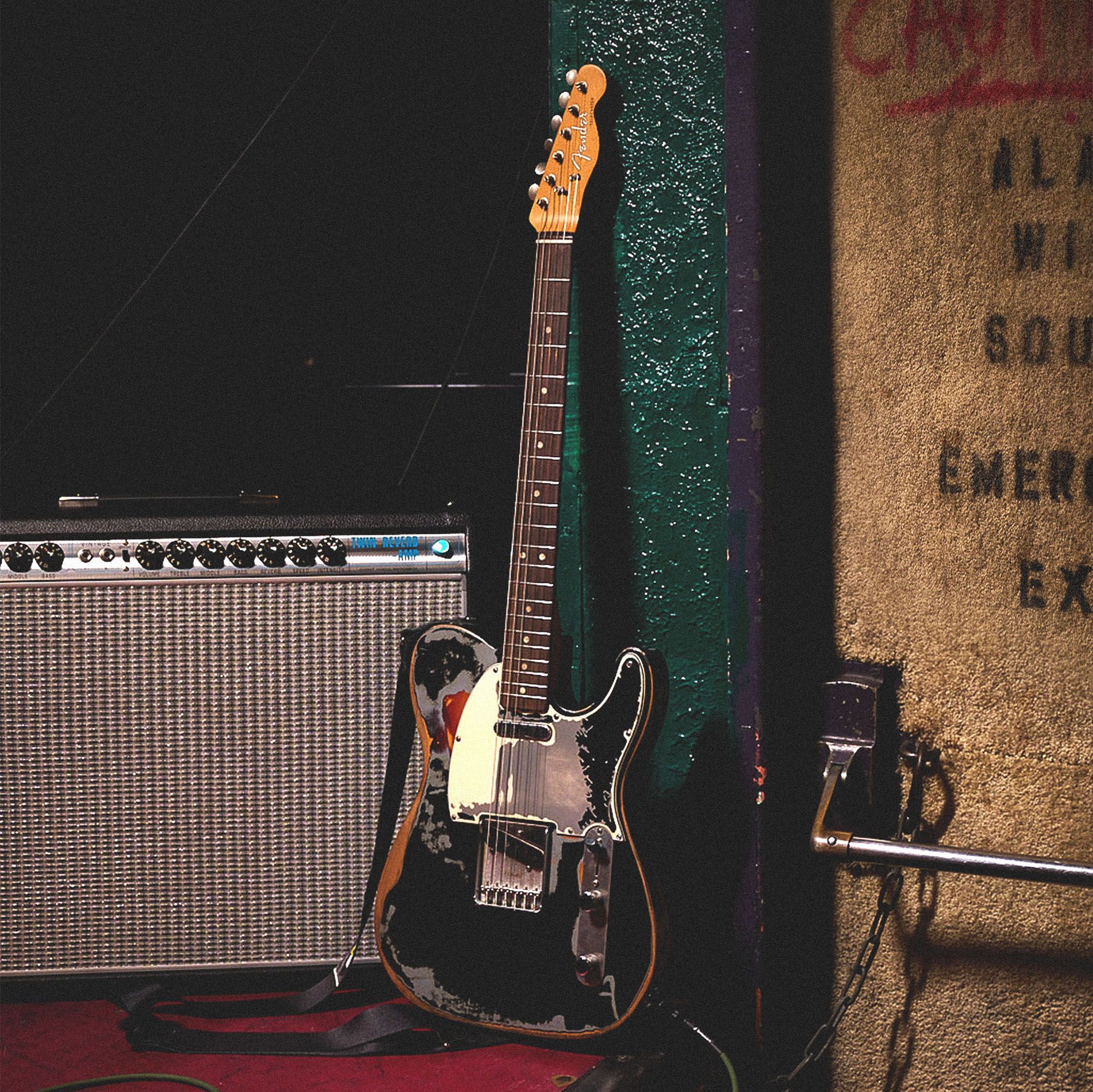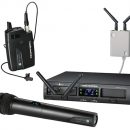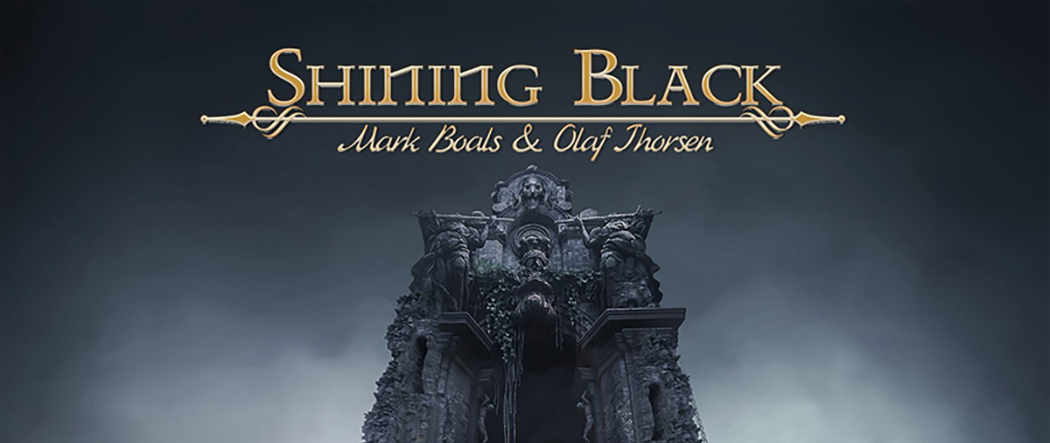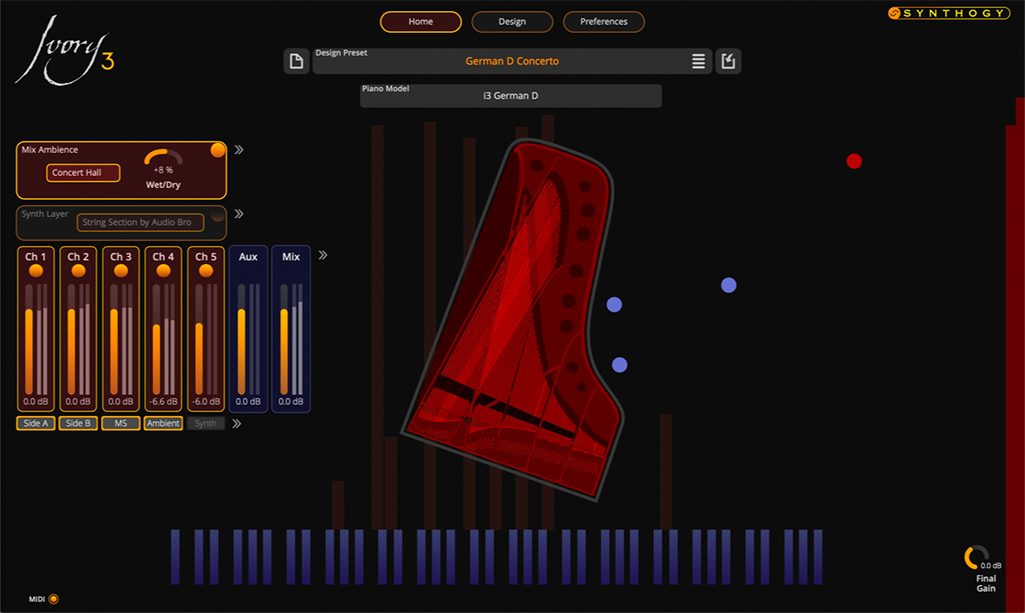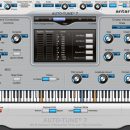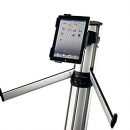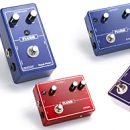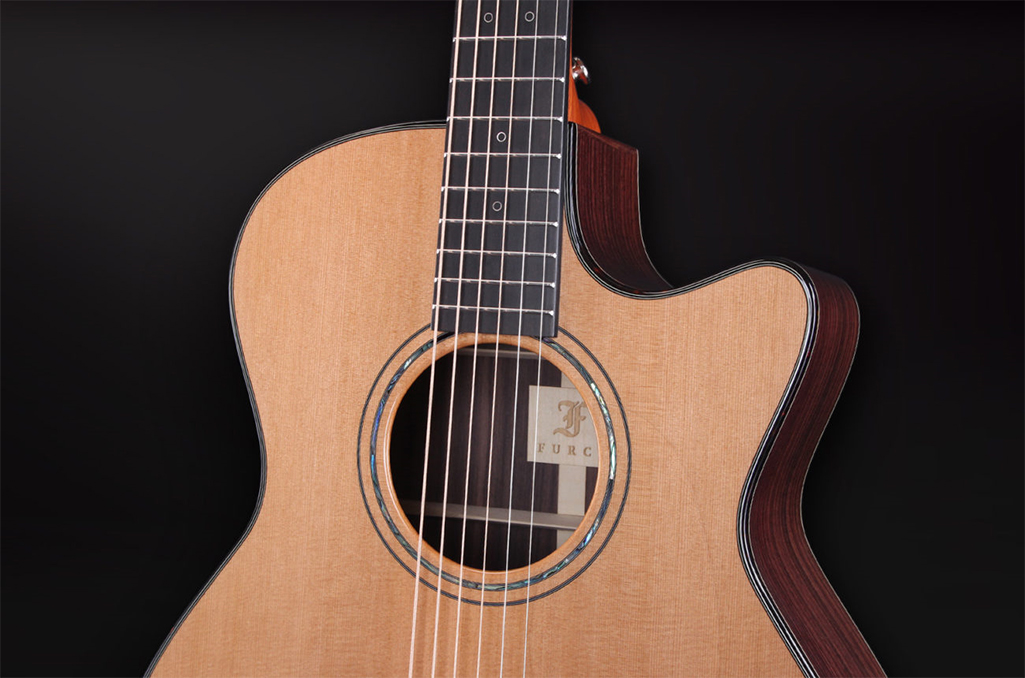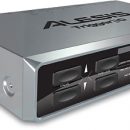 The Music Man JP6 is John Petrucci’s signature model six-string guitar. A superb instrument from start to finish (um, literally), you don’t have to be a progressive rock shredmaster in order to benefit from this instrument’s outstanding construction, superb playability, and beautiful tone. Of course if you are indeed shredworthy, this guitar will not let you down.
The Music Man JP6 is John Petrucci’s signature model six-string guitar. A superb instrument from start to finish (um, literally), you don’t have to be a progressive rock shredmaster in order to benefit from this instrument’s outstanding construction, superb playability, and beautiful tone. Of course if you are indeed shredworthy, this guitar will not let you down.
While there are some companies who make signature guitars that are slightly different than the actual models played by their endorsees, that’s not the case with Ernie Ball. Music Man artists play the instruments you can buy, though their instruments may sometimes appear to be prototype models or feature a custom finish.
| Category | Value | Rating |
| Features | 20% | |
| Usability | 25% | |
| Sound | 25% | |
| Documentation & Support | 10% | |
| Price | 20% | |
| OVERALL RATING = 3.6, which earns it a WIHO Award. 3.6 stars or better: Outstanding, WIHO Award 3 stars or better: Worth considering 2 stars or better: Suited to specific needs 1 star or less: Not recommended |
||
John Petrucci, the supreme axe-wielder from Dream Theater, worked with the folks at Music Man to develop a guitar that is very well suited for any player who cares about finesse. If you care about sonic details in your tone, you’ll hear them. Simple controls make the JP6 a true player’s instrument, even with a few “extras” thrown into the mix.
Our JP6 was configured with all of the electrical bells and whistles – piezo acoustic pickups in the bridge provided beautiful acoustic guitar tones in addition to the familiar sounds of a DiMarzio humbucker-loaded electric guitar, but controls remained simple to use. Stereo outputs enabled us to achieve dual-amplifier sounds that very few guitars are capable of achieving. Imagine playing a hard rock sound out of one amp while an acoustic guitar plays through a second amp set for clean tones. It’s live double-tracking of guitars!
Music Man guitars are renowned for their outstanding necks – playability described as silky smooth thanks in part to the gunstock oil neck finishes, low action, and superb fretwork. Combine the superb feel, great tone, and flexible output options, throw in perfect balance and a comfortably sculpted body, and it’s no wonder why we loved everything about this instrument.
Features
 At less than 7.5 pounds, the JP6 is light – in fact, it’s one of the lightest guitars we’ve played. Neck specs: twenty-four wide frets, 25.5” scale, 15” radius, 1 11/16” width at the nut, 2 ¼” at the last fret, maple with a rosewood fingerboard.
At less than 7.5 pounds, the JP6 is light – in fact, it’s one of the lightest guitars we’ve played. Neck specs: twenty-four wide frets, 25.5” scale, 15” radius, 1 11/16” width at the nut, 2 ¼” at the last fret, maple with a rosewood fingerboard.
The beautiful Pearl Redburst finish (more of a deep maroon than true red) was accompanied by a matched painted headstock. Our fretboard had dot inlays, but it is optionally available with John’s personal selection – bullet-shaped inlays.
The JP6 features two direct-mounted humbucking pickups. Earlier versions of this guitar had two humbuckers custom-designed by DiMarzio specifically for the JP6, but the guitar has been updated to now include a DiMarzio D Sonic in the bridge position. A three-way toggle switch provides the following three voices: bridge pickup, neck pickup, and in the middle, only the inside poles from each pickup connected in parallel.
Our guitar didn’t stop there, though! Underneath the string saddles reside piezo electric/acoustic pickups. A three-way selector on the horn of the body selects between DiMarzio-only, Piezo-only, or both.
Output from this guitar has every option you could hope for. Two output jacks on the side of the guitar provide numerous connectivity options: with two mono cables, one output contains the magnetic output (DiMarzio) and the other has the piezo output. With only one mono cable, both sets of pickups are routed to your amp, and the three-way toggle switch on the horn controls which output you hear (or both, blended). Finally, with one stereo TRS cable, both the DiMarzios and the piezos share a single cable, but with a breakout box at the other end, you can then split and route your signals to different amps.
The guitar has two knobs for the magnetic pickups’ output volume and tone, and a third knob for volume control of the piezos. Additionally, behind the guitar there are recessed screws for fine-tuning the bass, treble, and mix of the piezo output.
Schaller locking tuners and a JP6 custom vintage tremolo complete the package.
Additionally, the Music Man JP6 ships with a molded plastic hard case, and while there typically isn’t much specifically worth mentioning about a case, this one begs exception to that rule. It was actually designed with a cutout in the main cavity so that you can store your guitar in the case without having to remove the tremolo arm! It’s a small touch, but one that we noticed the moment we removed the guitar from the case for the first time and saw the tremolo arm already attached.
Usability
 Fit and finish on our JP6 were outstanding. The guitar shipped with low action and perfect intonation and was equipped with Ernie Ball Super Slinky 009s. The dark Pearl Redburst paint job with high gloss finish on the body and headstock was beautiful, and frets were sanded to perfection.
Fit and finish on our JP6 were outstanding. The guitar shipped with low action and perfect intonation and was equipped with Ernie Ball Super Slinky 009s. The dark Pearl Redburst paint job with high gloss finish on the body and headstock was beautiful, and frets were sanded to perfection.
In the JP6, Music Man has given us a new neck that feels significantly different from other Music Man instruments but is equally as outstanding. The neck has a very flat fretboard – we could bend notes as much as desired without ever fretting out. Unlike the thin Wizard neck on John’s former line of signature guitars from Ibanez, the Music Man JP6 has a slightly thicker (but still quite thin overall), round c-shaped neck that feels more like a vintage Stratocaster, but it’s even better thanks to the finish – a combination of gunstock oil and wax for a smooth natural wood texture that makes you wonder how you could play a neck finished any other way.
The neck shape really provides the best of both worlds – the rounded back is extremely comfortable to play for long periods, while the flat fretboard enabled us to perform the fastest runs we could throw at it. The neck is narrow, and playing everything from clean funky rhythms to complex chord fingerings to the heavy stuff was a treat. The deep cutaway in the body provided easy access to the upper frets on this guitar, too.
The JP6 is a beautifully balanced guitar. The basswood body has curves in all the right places, and the guitar rested comfortably against us whether playing standing or seated. Between its light weight and incredible balance (and that sumptuous neck!), this guitar doesn’t want to be put down.
While some players prefer five way switches, or the addition of coil tap/split switches to a humbucker-loaded guitar for more options, we share John’s love of simplicity – three distinct tones from the pickup selection are good enough for us.
Using the piezo pickup was a treat. We played the guitar both with a standard mono instrument cable as well as with two cables running to separate amps for our acoustic and electric tones. The volume control for the piezo pickup made it easy to fine tune levels without having to touch the amp. When used in the mono cable setting, we just left the volume up all the way and simply selected between magnetic or piezo output, or a blend of the two through a single amp.
 The vintage tremolo was a treat on so many fronts. String changes were a breeze. Our other guitars with floating tremolos tend to have double-locking Floyd Rose-based systems that make string changes a chore. Happily, not only did the locking-tuner equipped JP6 avoid those complexities, but tuning stability was excellent.
The vintage tremolo was a treat on so many fronts. String changes were a breeze. Our other guitars with floating tremolos tend to have double-locking Floyd Rose-based systems that make string changes a chore. Happily, not only did the locking-tuner equipped JP6 avoid those complexities, but tuning stability was excellent.
Sound
We played the Music Man JP6 through two tube amps – a Mesa/Boogie Road King Series II half-stack (John’s amp of choice, ironically) as well as a Fender Super Sonic 1x12 combo.
The JP6 dishes out a wonderful, diverse range of sounds that are suited to a tremendous range of styles. With the DiMarzio pickups, we achieved a range of beautiful electric tones that covered the range from metal to funk to blues.
In the bridge, the D Sonic was a rich, moderately detailed, high-output performer. For metal, punk, hard rock, etc. the tone was heavier than a Strat but lighter than a Les Paul. Compared to the original custom bridge pickup, the D Sonic is a little bit cleaner and has slightly less gain (perhaps because John’s Mesa/Boogie Road King amps have more than enough high gain firepower without the help of the guitar’s pickups). It has good clarity in the low end, though we wouldn’t rate it as outstanding. Finesse and prog-minded players like us want to hear clarity in the low notes even while running through high-gain channels, and while this is achieved with the D Sonic, we would have liked to hear slightly more separation of notes.
For lead playing, though, the D Sonic was outstanding – notes were thick and beautifully sustained, and feedback was well controlled, turning up just when we were ready for it, and not too soon.
The neck position custom DiMarzio pickup provided solid, bluesy tones on low gain and mid-gain amp settings, and for higher gain lead work, we achieved glorious hollow, fluty tones that (through our Road King) definitely captured the basic Petrucci Dream Theater tone. Now if we could only solo like John this would be even more special!
Unlike the middle position on John’s Ibanez guitars that featured DiMarzio Air Norton and Steve’s Special pickups, the middle position on the JP6 was significantly brighter in tone and had the bell-like character of high-end single-coil Strat pickups. Actually, if we plucked aggressively at the strings through some beautiful Fender clean tones in our Super Sonic, we might have convinced the guys in Nashville that we were ripping it up on a Telecaster! Through our Mesa/Boogie Road King, the middle position was a bit more Strat-like in tone. Nice!
Some players dislike the special three-way wiring. Because two single coils in parallel (middle position) are quieter than a humbucker in series (neck or bridge), there is a slight volume drop-off when using the middle position. We find it great for use during softer/clean verse passages, and then enjoy a subtle volume boost when switching to the bridge or neck pickups at chorus time. Compared to the previous version of the JP6, the middle position on the new version with a D Sonic bridge pickup exhibits less of a volume difference than with the original custom pickup.
The piezo acoustic pickup sounded great. With this tone by itself, our sound was convincingly that of an acoustic guitar miked through a PA system or guitar amp. It didn’t have the full depth or richness that a great acoustic guitar might have, but in a concert (or other live) setting, the sound is more than convincing – fans will hear an acoustic guitar, not an electric guitar set for clean tones. If you need to switch from acoustic sounds to distortion mid-song, piezo-equipped guitars are great choices, and the sound of the Music Man JP6 as an acoustic-electric was particularly good.
The next step took us from simply loving this guitar to placing it on our “desert island” list… running stereo amps. We routed the DiMarzio pickups to our Road King amp and routed the piezo output to a Marshall DSL-201 set for clean tones. It’s hard to find the words to describe the sonic possibilities that soon followed, but joy and bliss certainly top the list.
With a hard rock tone selected on our Road King, we were able to play heavy rhythms that were doubled with acoustic clean tones coming out of the second amp. Jimmy Page used to record acoustic guitars double-tracked over heavy rhythm guitars, and now we were able to play sounds like that live! In this dual-amp setting, we were able to switch from acoustic to heavy tones either at the throw of a pickup switch or with selective use of the volume knobs. Now if only we had a second wireless unit…
Documentation and Product Support
The JP6 comes with a sheet of paper that illustrates the various controls, though ours was missing the details for models with the piezo option. No problem – the web site contains downloadable diagrams.
Other guitars we’ve reviewed include helpful tips for instrument care and making various adjustments – it would be nice to see some additional support information added to the Music Man web site (or included with the guitar).
Price
Our Music Man John Petrucci JP6 ($2,275) sells for under $1,600 configured with the Pearl Redburst finish, matching headstock, and piezo option. You can get JP6 guitars without the piezo option and matching headstock for as low as $1,300 – they are identical in all other features. All Music Man guitars include a hard case.
We think the price is very good for a guitar of this quality.
Other Comments
Many players will no doubt be curious to compare the Music Man JP6 with the Ibanez JPM-100, John’s previous signature line of guitars before he became an endorsee of Music Man. Fans and owners of the former guitar will find very few familiar traits, though. [Editor’s Note: Scott has owned a JPM-100 P2 and P4, and senior editor Matt Pinson owns a JPM HAM-90, so we’ve spent a lot of time with the other Petrucci guitars.]
In the JPM guitars, John used DiMarzio Air Norton (neck) and Steve’s Special (bridge) pickups with the same custom three-way wiring found on the Music Man JP6. While the neck and bridge tones are similar (the neck tone is particularly similar to an Air Norton), the middle position was noticeably brighter in the D Sonic-equipped Music Man JP6. There was slightly less of a volume drop in the middle position on the JP6 than on the JPM guitars, though it wasn’t too bad in the first place, but we mention this since some players find this “feature” annoying.
We found the three-way switch on our older JPM-100s particularly heavy and hard to throw – the switches on the Music Man JP6 have a much better feel.
The JPM guitars used a double-locking Edge Pro tremolo (like a Floyd Rose). You have to cut the balls off the strings before clamping them in the bridge, making restringing a tedious and time-consuming procedure. The vintage tremolo in the JP6 is a dream to use by comparison, and we didn’t experience any issues with tuning stability.
Last, the necks are quite different. While the Wizard necks on Ibanez RG-series guitars (the JPM is based on an RG-series model) are quite popular with the shredders, and we tend to like them in general, the JP6 has a more comfortable playing neck thanks to the rounded c-shaped back and extra thickness compared to the super-thin Wizard necks.
If you would like to read a great, in-depth, MusicPlayers.com interview with John Petrucci, click here.
Contact Information
Ernie Ball Music Man
http://www.ernieball.com/mmonline
| Evaluation Short-List |
|



